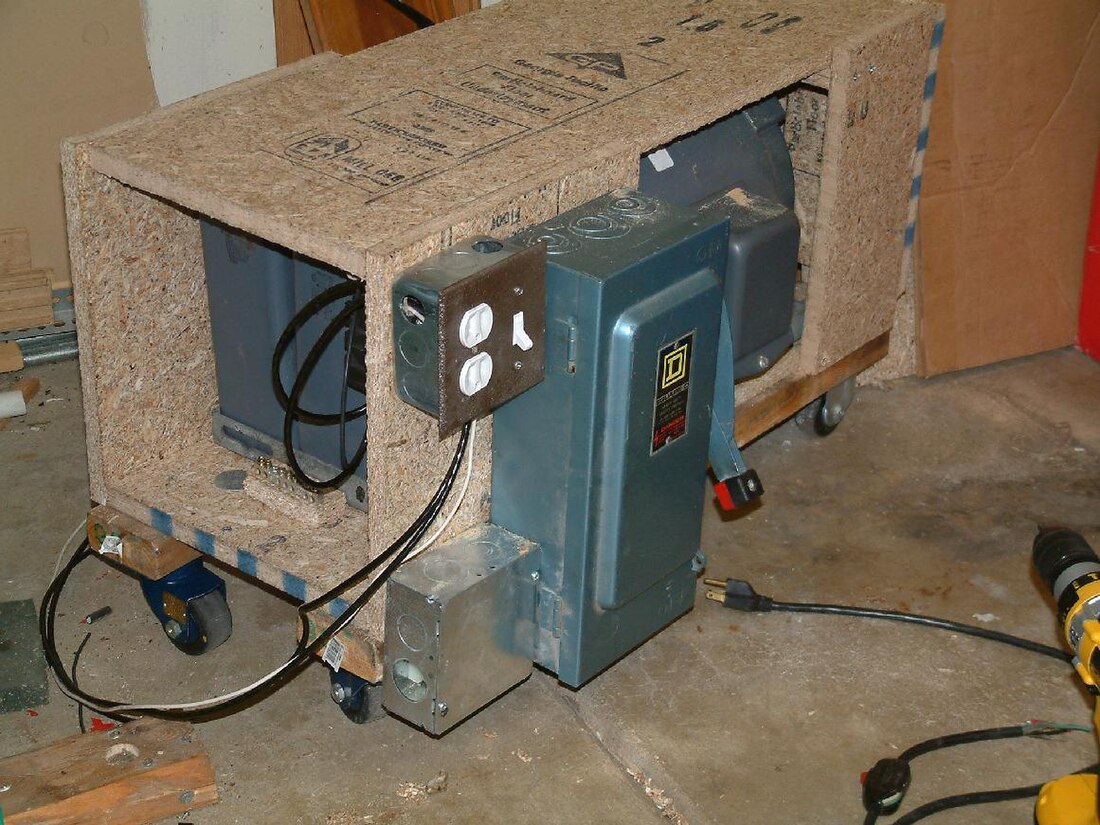Top Qs
Timeline
Chat
Perspective
Rotary phase converter
Electrical machine From Wikipedia, the free encyclopedia
Remove ads
A rotary phase converter, abbreviated RPC, is an electrical machine that converts power from one polyphase system to another, converting through rotary motion. Typically, single-phase electric power is used to produce three-phase electric power locally to run three-phase loads in premises where only single-phase is available.
This article has multiple issues. Please help improve it or discuss these issues on the talk page. (Learn how and when to remove these messages)
|
It has been suggested that this article be merged into Three-phase electric power#Phase converters. (Discuss) Proposed since October 2025. |




Remove ads
Types
Summarize
Perspective
A rotary phase converter (RPC) may be built as a motor–generator set. These completely isolate the load from the single-phase supply and produce balanced three-phase output. However, due to weight, cost, and efficiency concerns, most RPCs are not built this way.
Instead, they are built out of a three-phase induction motor or generator, called an idler, on which two of the terminals (the idler inputs) are powered from the single-phase line. The rotating flux in the motor produces a voltage on the third terminal. A voltage is induced in the third terminal that is phase shifted from the voltage between the first two terminals. In a three-winding motor, two of the windings are acting as a motor, and the third winding is acting as a generator. Since the third, synthesized phase is driven differently from the other two, its response to load changes may be different causing this phase to sag more under load. Since induction motors are sensitive to voltage imbalance, this is another factor in de-rating of motors driven by this type of phase converter. For example, a small 5% imbalance in phase voltage requires a much larger 24% reduction of motor rated power.[1] Thus tuning a rotary phase converter circuit for equal phase voltages under maximum load may be quite important.
Remove ads
Uses
Electric railways
Rotary phase converters are used to produce a single-phase for the single overhead conductor in electric railways.[citation needed] Five European countries (Germany, Austria, Switzerland, Norway, and Sweden), where electricity is three-phase AC at 50 Hz, have standardised on single-phase AC at 15 kV 16+2⁄3 Hz for railway electrification; phase converters are, therefore, used to change both phases and frequency. In the Soviet Union, they were used on AC locomotives to convert single-phase, 50 Hz to three-phase for driving induction motors for traction motor cooling blowers, etc.[2]
Remove ads
See also
References
Further reading
External links
Wikiwand - on
Seamless Wikipedia browsing. On steroids.
Remove ads
